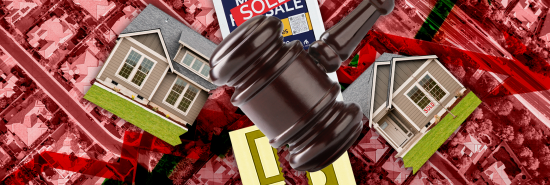
Reasons for hope and despair about the housing market
Tiana Lowe Doescher
Video Embed
The U.S. housing market is currently a grim part of the economy.
Mortgage rates are nearing 8. September saw the fewest homes on the market in recorded history. And home sales in mid-October hit a 13-year low.
FEDERAL COURT TO WEIGH AMTRAK BID TO TAKE DC’S UNION STATION IN EMINENT DOMAIN CASE
But there is room for optimism about the housing market, including a deflating of prices that have killed even some upper-income earners’ ability to buy in. And it’s coming from the courts, not the markets.
A federal jury in Missouri found on Oct. 31 that the National Association of Realtors and multiple other real estate brokerages violated antitrust laws by conspiring to inflate the broker commission costs for residential home sales. Plaintiffs are asking the association, which represents 1.5 million real estate agents, to pay nearly $1.8 billion in damages.
Their lawyers promise more lawsuits against the real estate industry to come. Meanwhile, the association has indicated that it will appeal the verdict.
The American realty model is an important factor fueling our uniquely expensive market. In the United Kingdom and the Netherlands, real estate agents earn an average commission of less than 3%. Yet the average American real estate agent earns a 5.4% commission, split between the selling agent and the buying agent. Both agents profit from this model not just in terms of the price tag but thanks to the fact that either can pretend that the commission is paid solely by the other half of the equation, rather than the commission being baked into the listing price.
Experts estimate that the ruling against the association could slash the future commissions of Realtors by as much as a third. That’s excellent news, obviously. But it’s offset, at least somewhat, by some worrying trends in the U.S. housing market.
That’s because the real breathing room required to restart the housing market is an increase in supply, not just deregulating downward pressure on demand.
Unlike our northern neighbors in Canada, who widely use some form of an adjustable-rate mortgage, the American norm of fixed-rate loans has turned the property sales cycle into a game of musical chairs. Home buyers race to lock in rates at their nadir and then often are stuck in those current properties while the Fed hikes interest rates to their highest point in 15 years. So, the Fed’s recent run of rate hikes has jacked up mortgage rates from less than 3% to about 8%. Not surprisingly, buyers do not want to vacate their homes when trying to purchase a new one is so expensive.
The result? The rental vacancy rate of 6.6% this past quarter is one of the lowest tracked by the Census Bureau in nearly 40 years, and the homeowner vacancy rate of 0.8% is the second lowest ever recorded. (The lowest rate of 0.7% was posted in the second quarter of this year.)
The obvious culprit of this shortage can be explained in the solution. A study by Realtor.com found that the dearth of single-family homes compared to household formation over the last decade grew to an astounding 6.5 million homes. But this gap could shrink to just 2.3 million homes should the nation decide to embrace multifamily home construction.
The culprit is not really, then, the Fed’s necessary monetary tightening. Rather, it’s local legislation that obliterates the principles of free market capitalism in favor of regulatory capture by a landowning class that wishes to lock unfavorable potential neighbors out of their own communities.
Across the Anglosphere, the housing supply has held stagnant at roughly 400 homes per thousand residents over the past 40 years, whereas the ratio in the rest of Western Europe has risen to 560 dwellings per thousand residents. Over the past 10 years, the ratio in the U.S. has actually fallen. Real housing prices have corresponded to the laws of supply and demand, with nominal housing prices up a staggering 7% in the past year alone.
However, not all localities are created equal. According to a recent deep dive by the Washington Post, seven of the 10 top home-building states voted for then-President Donald Trump in 2020. While seven of the bottom 10 went for President Joe Biden over the one-time Manhattan real estate developer. On a local level, the redder the region, the more pro-growth it is.
CLICK HERE TO READ MORE FROM THE WASHINGTON EXAMINER
“Even in states that voted for Biden in 2020, the typical Trump-voting county permitted twice as much housing per person as its Biden-voting neighbors and rivals,” reporter Andrew Van Dam wrote. “The more remote workers a red county had from 2017 to 2021 — during the pandemic remote-work population shuffle — the more housing it’s currently building. Meanwhile, even blue Zoomtowns beloved by remote workers aren’t building much more housing than less-desirable blue locales.”
Reduced interest rates and collusive control of the real estate agent cartel will indeed relax red-hot housing prices. But the real crisis is one of supply. If the demographic transformation of the post-pandemic country is any indication, population growth is a policy choice, and if you allow homebuilders to meet consumer demand, new residents will come.
